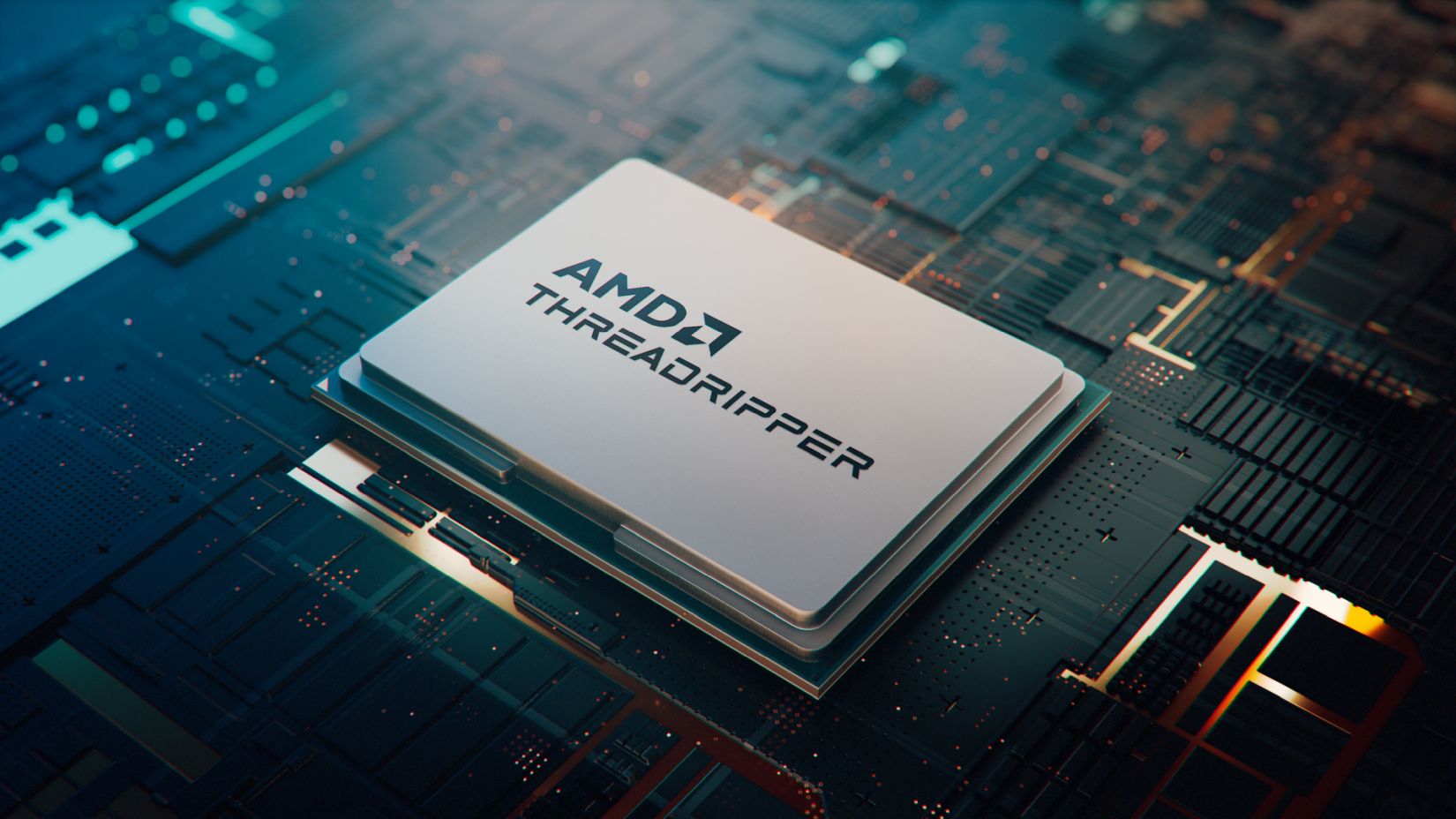It’s long been expected that AMD would announce a Zen 4-based, Ryzen 7000-series Threadripper Pro family. That announcement date is today. But while Threadripper Pro was expected, less expected was the announcement of the return of non-Pro Threadripper for desktops after killing it in the last generation. AMD has done just that, saying “We hear you, you’re right, we brought it back.”
It has now announced three new CPUs and accompanying TRX50 chipset motherboards. So, the high end desktop is back, with a super high price of entry, though you’ll have to wait a few weeks as availability is scheduled for November 21.
AMD announced three of these non-Pro HEDT chips. They are the $4,999 64-core 7980X, the $2,499 32-core 7970X, and the $1,499 24-core 7960X. AMD will launch six Threadripper Pro models and accompanying WRX90 motherboards too for the really serious CPU users. The Pro range is topped by the 7995WX, a 96-core monster of a chip, which you can also use in the non-Pro motherboards, too.
There will also be 64, 32, and 24-core options, and interestingly, 16 and 12 core chips too. The price of the latter pair will be interesting to see considering the standard Ryzen desktop has the same spec CPUs right now.
The Ryzen Threadripper 7980X is the current flagship of the non-Pro range. It sports 64-cores and 128-threads of processing horsepower. It packs in a total of 320MB of cache, and that’s made up of 256MB of L3 and 64MB of L2 cache. The big news with this Threadripper generation is that it’s got a 5.1GHz maximum boost clock, which is much higher than previous generations, giving it some pretty good lightly threaded capabilities too. TDP is 350W.
The 32-core, 64-thread 7970X, with half the core count of its big brother, comes with 128MB of L3 and 32MB of L2 cache. Its boost clock is a little higher at 5.3GHz, while TDP remains the same, at 350W.
The baby of the range—if you can call it that—is the 7960X. It’s a 24-core, 48-thread model with a 5.3GHz boost clock. It’s got 152MB of cache, just 8MB less than the 7970X, and that would suggest the 7960X is a still a 4-CCD design, with two cores turned off in each, giving each of the four 6-core complex access to the full 32MB of L3 cache.
But AMD told us that each of the three Threadripper non-Pro chips contain eight Core Complex Dies (CCDs), which would make this 24-core version a bit of an oddity with eight three-core CCDs inside it. That’s going to make the inter-CCD latency a key issue for this chip as workloads are going to have to be more spread out across CCDs than we would have otherwise expected.
It too comes with a 350W TFP, though I’m assuming it won’t use anywhere near that.
Threadripper 7000-series CPUs are chiplet based designs featuring the Zen 4 architecture. The fundamentals of the design are mostly similar to that of Ryzen 7000-series desktop processors, so with that in mind, it’s well worth checking out Dave’s Ryzen 9 7950X review, which has a lot of information on what makes Zen 4 tick.
(Image credit: AMD)
At a high level, Threadripper 7000’s Core Complex Dies contain eight-cores. The central I/O die includes the memory controller, Infinity Fabric and PCIe functionality. AMD didn’t reveal what nodes the CCDs and I/O dies are built with, but TSMC sourced 5nm CCDs and a 12nm IOD would be a fairly safe assumption, as is the case with AMD’s Ryzen 7000-series desktop processors.
One of the major differences between the desktop and HEDT families is that Threadripper 7000-series chips will only support registered memory. UDIMM memory is not supported. That means you’ll need to buy new memory which will cost a pretty penny. AMD’s reasoning is that Threadripper is very much oriented towards professional applications, though it remains to be seen just how a four-channel RDIMM implementation will compare to a commonly used high speed dual channel one, at least when it comes to gaming. With RDIMMs, you’ll get support for up to 1TB of memory, with a potential 2TB when densities inevitably increase.
(Image credit: AMD)
Threadripper for desktops will be accompanied by motherboards with the TRX50 chipset. They’ll come with support for 4-channel DDR5 RDIMM memory and a total of 88 usable PCIe lanes, with 48 of them being Gen 5 lanes. AMD allows overclocking of the the CPU and memory.
We can expect to see motherboard vendors release some relatively reasonably priced motherboards, though I’m sure we’ll see some utterly ridiculous high-end options too.
Interestingly, TRX50 motherboards will support those big boi Pro processors, too, so if you really want 192-threads of raw processing grunt in your desktop, AMD has you covered. Though if you install a Pro processor, you’ll lose the Pro security features, 8-channel memory support and the higher PCIe lane count exclusive to WRX90 motherboards. Note that you won’t be able to go the other way around, and use a desktop Threadripper in a WRX90 motherboard.
Now for a little opinion. Cost aside, and prior to knowing just how the TRX50 platform and Threadripper 7000-series will perform in gaming, I am thrilled to see the return of a proper HEDT platform. I have written about my longing for a consumer Threadripper before.
(Image credit: Future)
Best CPU for gaming: The top chips from Intel and AMD.
Best gaming motherboard: The right boards.
Best graphics card: Your perfect pixel-pusher awaits.
Best SSD for gaming: Get into the game ahead of the rest.
I just love the idea of an all powerful system with no compromises to speak of. You can run heavily or lightly threaded software, or game and stream and multitask all at the same time. With full fat cores I might add. Not low power efficient ones.
You can add to that the ability to run a graphics card with all 16 lanes at full speed, a PCIe 5.0 SSD or two, plus expansion cards, USB 4, 10G LAN and WiFi 7 all at the same time. Desktop motherboards can’t do all that.
But then the pricing was revealed and this consumer Threadripper variant is suddenly far less appealing. The previous 64-core non-Pro Threadripper chip was over $1,000 cheaper than this one, and having an entry-level CPU coming in at $1,500 is brutal. Factor in that you’re looking at some pricey new motherboard, having to buy four sticks of DDR5 RDIMM memory, and an expensive CPU and a non-Pro Threadripper machine will certainly carry a Pro price tag.
Threadripper Pro CPUs, Threadripper HEDT CPUs and TRX50 motherboards are scheduled to go on sale on November 21. The whole range is expensive for certain, but those who want more than the mainstream platforms can deliver, Threadripper 7000 looks pretty good. Maybe not so much for gamers, but we do use our PCs for things other than gaming, remember.











